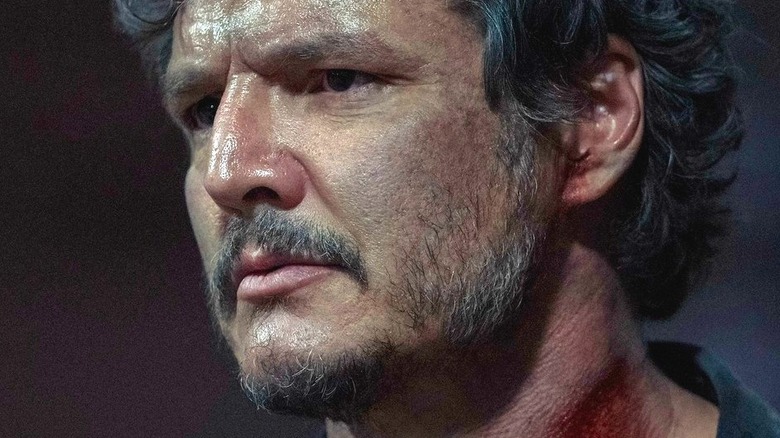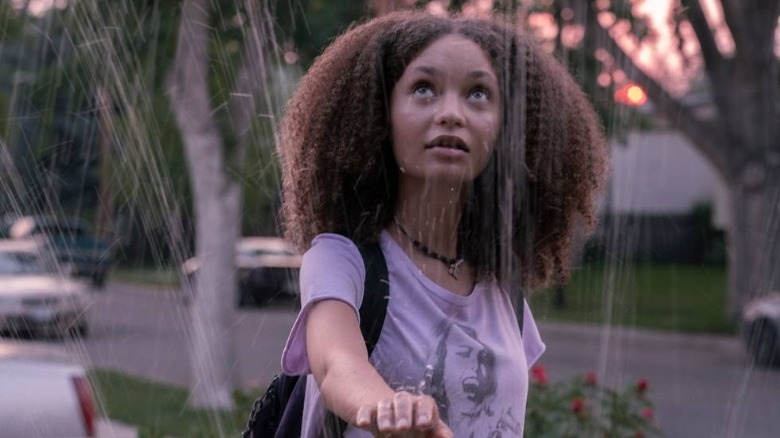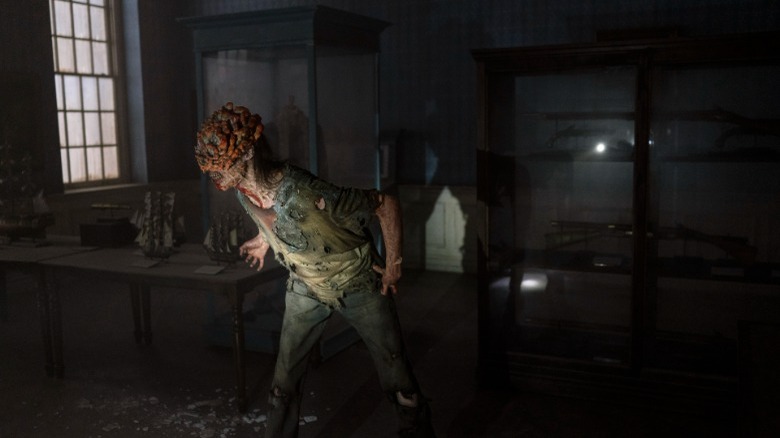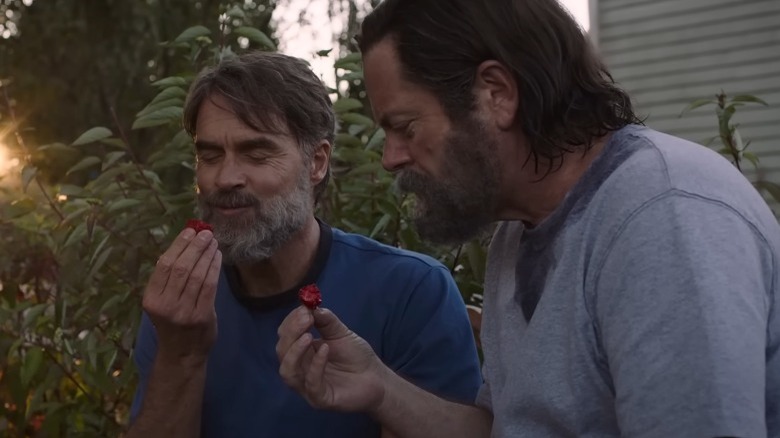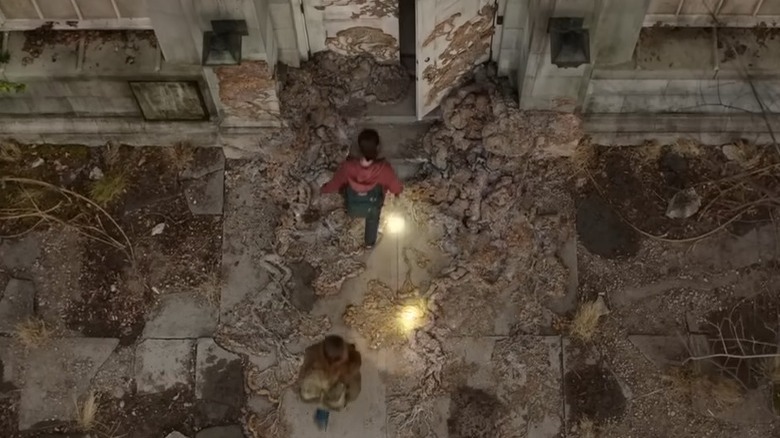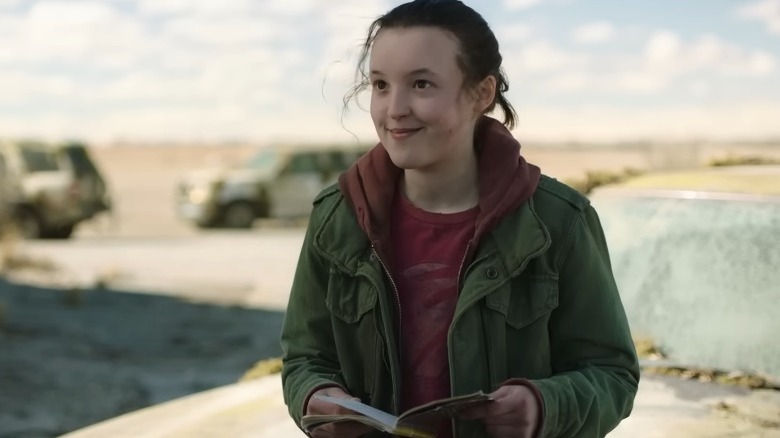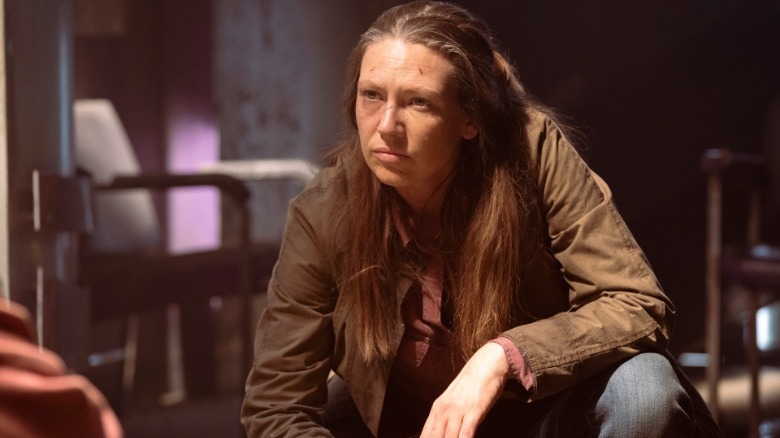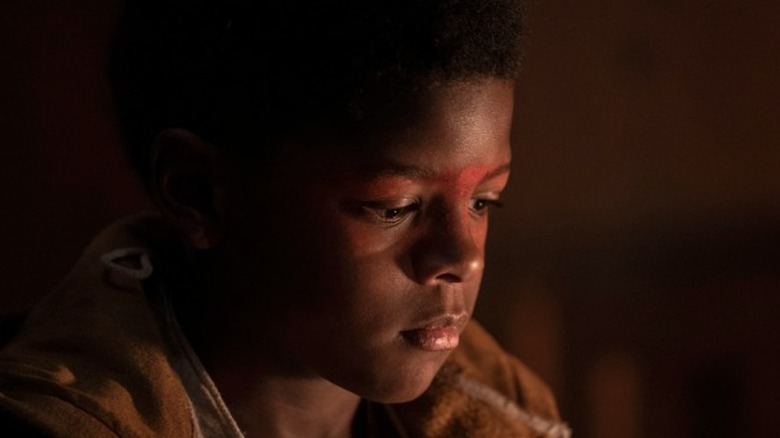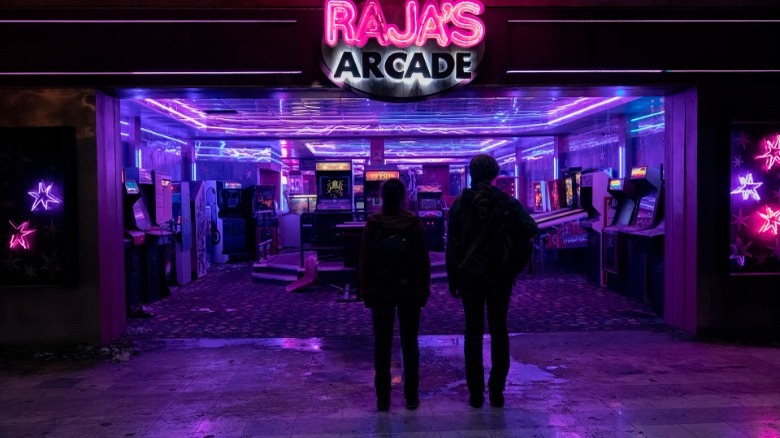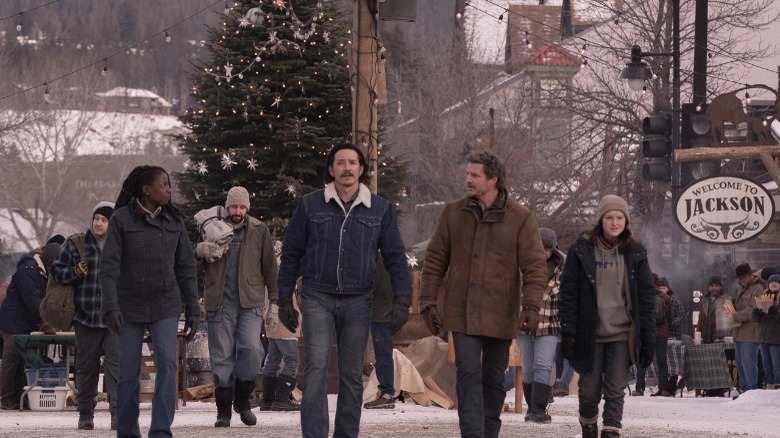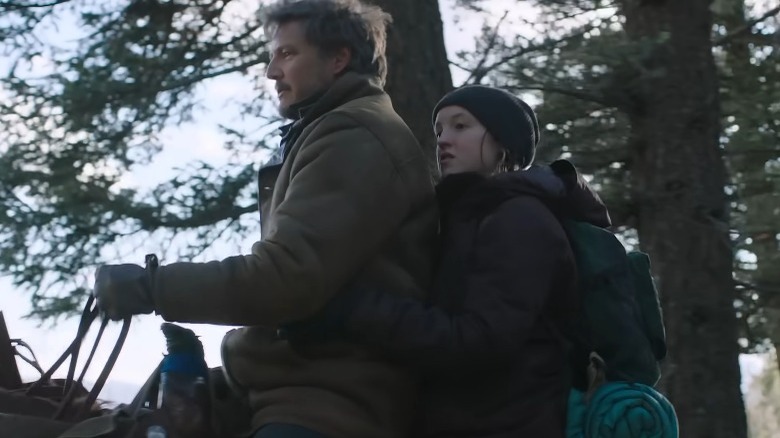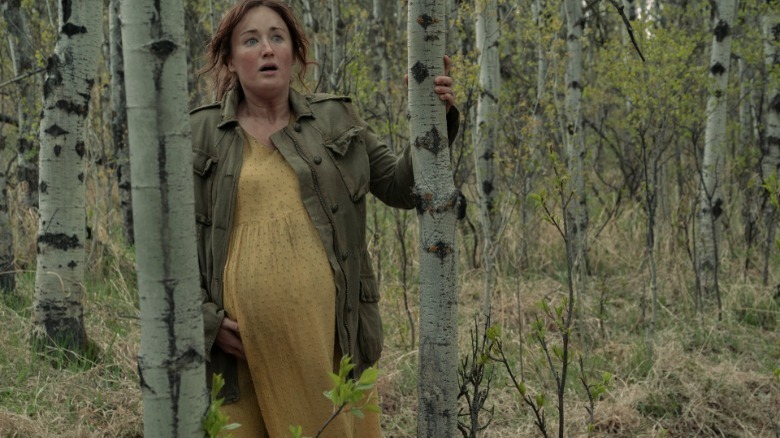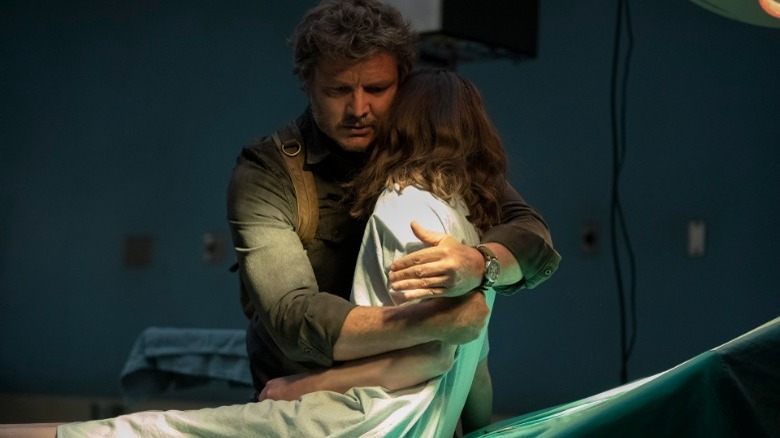The Last Of Us Season One: 6 Ways It Was Better Than The Game (And 6 Things That Didn't Click)
Naughty Dog's "The Last of Us" became an instant classic when it debuted in 2013, and a decade on, it's still one of the best video games ever made. Set in a not-quite zombie apocalypse, the story follows two people forced to travel across the country together to potentially save the world. Joel is a grizzled survivor who lost his daughter when the infection first broke out and has now seen it all. Ellie is a teenage girl who's only ever known life in the apocalypse, and who just so happens to be immune from the fungal infection that ruined humanity.
"The Last of Us" has gone through a stunning transformation in the years since its first release, and it continues to pull in new fans. Gamers first fell in love with Joel and Ellie when they played the original game. Now HBO's adaptation of "The Last of Us" offers the chance for a whole new audience to discover one of the best stories in gaming. The show makes some genuine improvements to the original story, but not every change it makes is successful. Here's the full rundown of what makes the show even better than the game, and what it should have left alone.
Better: Sarah's story
In all the most important ways, HBO's "The Last of Us" follows the exact story that Naughty Dog presented back in 2013, but that doesn't mean nothing has been changed. Right out of the gate, the show proves that it's willing to elaborate on the game's story when it has something worthwhile to add. In the game, Joel's daughter Sarah was more plot device than a character. She gets one brief scene with Joel before cordyceps makes its way into their town, and Sarah meets her tragic fate.
The show slows down the story's introduction significantly, and it actually spends time letting the audience get to know Sarah a little better. About half of the first episode is spent building up to the apocalypse and the 20-year time jump that puts Joel and Ellie in the same space. The entire segment is told from Sarah's perspective, showing her getting Joel a birthday present, spending time with the neighbors, and watching in horror as society collapses. The slower pacing doesn't just make Sarah's death more impactful, it also makes her a bigger presence throughout the rest of the show. The ghost of Joel's loss is more present in the show than it was in the game because viewers have a better sense of what he's really going through.
Didn't click: The infected
By this point it's a cliche in zombie apocalypse stories that the biggest, scariest threats actually come from the other human survivors. "The Last of Us" isn't technically a zombie story, but the same rules generally apply to it. The game, however, managed to buck that particular cliche. Arguably the most interesting or complicated threats came from other human beings, like the cannibal preacher David, but without a doubt the biggest threats were always related to the infected.
Whether it was clickers or bloaters, anytime Joel and Ellie stepped into an area overrun with infected, players knew they were in for a real challenge. Clickers had to be shivved to be beaten. Bloaters required relentless attacks and a healthy supply of ammo to beat. Human enemies, by contrast, could just be choked out with a clever bit of stealthy playing.
For all its successes, the show never emphasizes the real danger of the infected. Clickers, bloaters, and even regular runners aren't shown all that frequently, and when they are, Joel and Ellie manage to escape them without too much difficulty. Because the show so brilliantly expands on the human enemies in the story, it's hard to complain about the infected taking a backseat, but the move does push this version of "The Last of Us" closer to typical zombie territory.
Better: Bill and Frank's relationship
In the third episode of "The Last of Us," the show takes a lengthy detour from its source material that significantly expands on some characters who never got a real chance to shine. In the game, Joel and Ellie meet up with Joel's contact Bill to ask for some help. It turns out that Bill's partner Frank recently died, and the town that Bill lives in is now overrun with infected. After helping Bill blast his way through the infested streets, Joel and Ellie secure a car and continue on toward their rendezvous with the Fireflies.
The show dedicates an entire episode to telling the story of Bill and Frank. It flashes back to the very beginning of the cordyceps apocalypse when Bill joyously discovers that the world has fallen apart. Bill, it turns out, is a prepper who's been waiting for the world to end for a long time. Later, Frank stumbles into a trap on the outskirts of Bill's encampment, and what could have easily been a short and violent interaction between the two slowly blossoms into a deep, loving relationship. The episode lingers through decades of Bill and Frank building a life together in the apocalypse, and in the process it creates the most touching relationship in "The Last of Us" in any medium.
Didn't click: Tendrils vs spores
While the nitty gritty of fungal infections might not have that much bearing on the story's plot, the show's change to how cordyceps functions has huge implications for the state of humanity in the post-apocalypse. Unfortunately, Season 1 doesn't take full advantage of its new lens on the infection.
In the game, people get infected with cordyceps through two means. They can be bitten by an infected person — which can also happen in the show — or they can breathe in airborne spores. Decades after civilization has fallen apart, the spores have mostly gathered in ruined buildings with poor ventilation. Often characters will have to wear gas masks while they move through certain areas to avoid infection.
In the show, cordyceps spreads through tendrils that lace the ground in certain areas and emerge from the mouths of infected people. For the most part, this means people have to get bitten to be infected, but it also means that whenever someone touches a patch of fungus on the ground or a wall in one place, all the infected in the area become aware of their presence. As a concept, having the infected be interconnected across large distances is definitely interesting and potentially terrifying, but outside of one scene in Episode 2, the show never utilizes the idea. If Season 2 runs a little further with the concept, it could be a way to make the infected more threatening than ever.
Better: Ellie's first kill
In the game's version of events, Joel and Ellie head to Pittsburgh after getting a car from Bill's town. The show takes them to Kansas City, but that geographical shift doesn't change how events play out. As the two of them are driving through the city they get attacked by a group of people and crash their truck into a store.
Joel tells Ellie to hide while he deals with their attackers, who are now flooding into the store. Joel manages to take on the group with relative ease, but one straggler sneaks into the store and manages to attack Joel from behind. Ellie hears Joel being choked and decides to rush out into the store herself. She grabs a gun and shoots the man choking Joel, but the shot doesn't kill him. Instead, he's moaning in pain on the ground, begging for mercy until Joel finishes him off.
Ellie's first kill in the game also comes as a means of protecting Joel, but the show really lets the moment linger. It highlights that Joel and Ellie are sometimes forced to hurt real people, who feel pain and suffer just like the two of them do. The fight shakes Ellie up, but it also prepares her for the dangerous world that she and Joel are making their way through.
Didn't click: Tess's arc
Tess is a huge part of Joel's life after cordyceps, but she doesn't get much screen time in either the game or the show. Her plot arc is the same in both versions of the story, but some of the show's minute changes to her character have a huge impact on how she comes across to the audience.
Tess and Joel are partners, but in the game, it's clearly Tess who calls the shots. She leads Joel into an attack on Robert, who's recently ripped the two of them off. Joel might be the muscle, but everyone seems to know that Tess is the person to fear. The show mostly flips that dynamic. Tess is introduced as Robert's prisoner, and when she escapes, it's Joel who really wants to take the fight back to Robert. Tess initially tries to talk Joel out of it, and in the end, the Fireflies kill Robert before either of them gets a chance.
The show also makes a small but significant change during Tess's death scene. Tess is once again sacrificing herself to save Joel and Ellie, but this time around, they are running from a horde of infected instead of a team of FEDRA soldiers. An infected approaches Tess and gives her a horrifying "kiss," with its tendrils snaking into her mouth just before they both explode. It's a bizarre way to frame Tess's death that really undercuts the power her character had in the game for no apparent reason.
Better: Henry and Sam
Henry and Sam have important roles to play in both versions of "The Last of Us." In the game, they are survivors that Joel and Ellie meet in Pittsburgh. They are a mirror version of the story's main duo, and because Ellie and Sam are so close in age, the two of them become fast friends. For a second, it seems like Henry and Sam will be helpful traveling companions for Joel and Ellie, but all of that gets snatched away when Sam is bitten, and Henry shoots himself.
In the show, Henry and Sam are still foils for Joel and Ellie, and their deaths are just as shocking and brutal as they were in the game. What changes is that Henry and Sam get to be even more fully formed characters in the show. Sam is deaf, and he demonstrates both the unique dangers and joys of living with a disability in the post-apocalypse. Henry had been part of the Kansas City resistance movement, but he was forced to sell out one of their leaders to FEDRA to secure medicine for Sam. He and Sam come to Joel and Ellie for help because the resistance — and particularly its new leader Kathleen — is hunting them down. The expanded story for Henry and Sam is a welcome change from the game, but it also makes their deaths even more heartbreaking than they already were.
Didn't click: Ellie playing Mortal Kombat
Naughty Dog released the "Left Behind" DLC in 2014. Rather than continuing the story told in the first game, "Left Behind" takes a look backward and shows players how Ellie discovered her immunity and lost the person she loved most in the world all in one blow.
Episode 7 of the TV show adapts the "Left Behind" story for HBO, and like the rest of the series, it stays faithful to the version of events that played out in the game. The entire emotional arc of Ellie and Riley's relationship is beautifully translated into a new medium, and the show only makes changes to some small moments in the DLC. It's always the small moments in "The Last of Us" that have the most impact, though, and there's one detail that never should have been changed.
In the episode, Riley takes Ellie to an arcade in the mall, and the two of them get to play "Mortal Kombat" together. For a moment, it's like they're kids from before the apocalypse, and their larger worries melt away. In the game, they were standing in front a cabinet for a fictional game called "The Turning," which was sadly out of order. Instead of playing, Riley described the game to Ellie, and she imagined the entire fight playing out in front of her. That version of events is a bit more melancholy, but it feels in line with the world that's already been presented, and it brings Riley and Ellie together even more effectively. Still, it would've been nice for fans to see "Mortal Kombat" make an appearance.
Better: Spending time in Jackson
In both the game and the show, Joel and Ellie eventually make their way out to Wyoming and meet up with Joel's brother Tommy. They discover that Tommy has found himself a new home in a settlement called Jackson. The game establishes that the settlement is bigger than almost any other outside of the established Quarantine Zones and reveals that Jackson gets some electricity from a nearby dam, but Joel and Ellie continue on their journey before getting to spend any real time in the town.
As it does in many other instances, the show slows the game's pace down when Joel and Ellie arrive in Jackson. They spend just one night in the town, but that's more than enough time for the show's audience to get a more meaningful look at how the settlement works. In contrast to the post-apocalyptic landscape that Joel and Ellie have spent weeks traveling through, Jackson seems like a utopia. The people there all have their own homes, and they cooperate to keep the town running as smoothly as possible. There's electricity and even movie nights for the kids in town. The Jackson episode makes it clear that Joel and Ellie will return to the town when their mission is done, and it nicely establishes the settlement before Jackson becomes a larger part of the story in Season 2.
Didn't click: Less time with Joel and Ellie
There's one problem with "The Last of Us" on HBO that was probably unavoidable. While exploring the game, players get to spend more than a dozen hours with Joel and Ellie. Aside from all the zombie fighting and raider killing, the game is also filled with countless quiet moments and bits of conversation between the two leads. Ellie will comment on something in a pre-war building, and Joel will tell her a story about his own life before cordyceps. The two get to share a joke or a soft conversation between moments of chaos.
The show just doesn't have the same amount of time to spend on Joel and Ellie as the game. It does an admirable job developing their individual characters and their overall relationship. Along the way it also recreates an impressive amount of their interactions and lovingly translates their biggest moments into a new medium. All that said, with only 9 episodes to tell the entire story, the show was never going to be able to build the Joel and Ellie relationship as effectively as the game did.
Better: Meeting Ellie's mom
Developing a larger story for Bill and Frank gave "The Last of Us" its best episode, but the show's best change from the game actually comes as a flashback scene in the finale. The scene follows Ellie's mom Anna, who's pregnant, alone, and running for her life from some infected. She manages to successfully kill the infected that's chasing her, but not before it bites her on the leg. After Anna gives birth, Marlene enters the room, and we find out that the two of them have been lifelong friends. Marlene agrees to get Ellie to safety, then kills Anna before the infection transforms her into a monster.
This scene does an incredible amount of heavy lifting for the show. It subtly provides an explanation for Ellie's immunity. It creates a deeper tie between Ellie and Marlene than the connection they had in the game. It provides a thrilling, and terrifying, look at how difficult pregnancy would be in this particular apocalypse. And it does all of that without changing the course of the game's already-established story. As if that weren't enough, the scene also works as a treat for hardcore fans of the game because Ashley Johnson – the actress who portrayed Ellie – gets to play Anna. This one scene is the perfect example of everything that the show manages to do better than the game.
Didn't click: The finale's pacing
The ending of "The Last of Us" is the most powerful moment of the entire story. Showrunner Craig Mazin has even said the ending is what made him want to make the TV show. Everything in the game builds up to Joel's decision to destroy the Fireflies in order to save Ellie. His next choice to lie to her about what happened completely changes the way their relationship functions and sets up so much conflict that gets explored in "Part 2." Perfect endings are rare, but Naughty Dog pulled one off back in 2013.
The show had a lot to live up to, so maybe it's not surprising that it misses the mark by just a hair. Oddly enough, the ending of Season 1 is less impactful than the game's because the two are so similar. Instead of taking a moment to expand on the game, as it does so many times throughout Season 1, the show powers through the original ending beat by beat and ends up feeling rushed.
If the finale had been split into two episodes, there might have been enough time to explore both the Fireflies' situation at the hospital and the return trip to Jackson. That might have been enough to make the show's closing moments a home run, but instead, the ending feels like a quick summary of what happened in the original version of the story.

